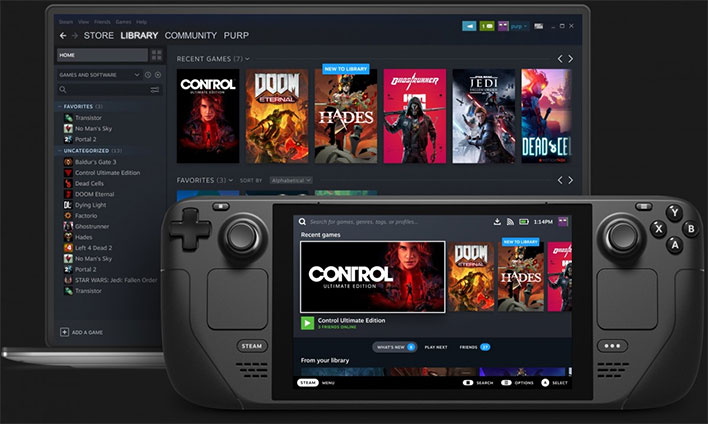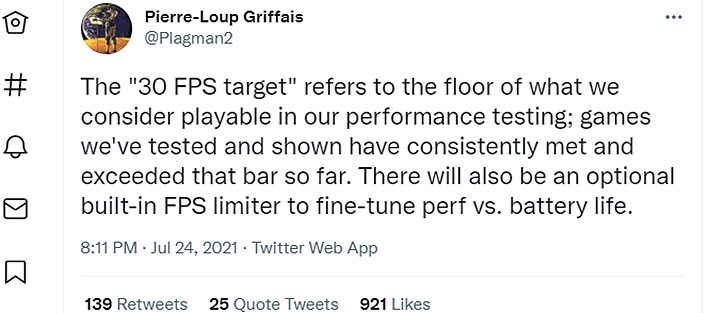Here's Why The Steam Deck Handheld's 30 FPS Target Is Not A Frame Rate Lock

At this point, Steam Machines are little more than a footnote in the history of computing, but that did not stop Valve from focusing on hardware. Just the opposite, it recently announced the Steam Deck, a promising handheld that has drawn inevitable comparisons to the Nintendo Switch, though the two are very different products. And don't worry, Valve says, that 30 frame per second target you may have heard about is not a frame rate lock by any stretch.
The concern arose when Valve designer Pierre-Loup Griffais suggested in a recent interview that gamers who are used to high frame rates on other platforms will be happy with 30 FPS on the Steam Deck's 1280x800 screen, which is a lower resolution that most monitors (most gaming monitors are 1080p, 1440p, or 4K).
"So far we’re looking pretty good, I think—everything that’s been coming out this year has been running without issues, that we’ve tried. I think this is largely a factor of industry trends. If people are still valuing high frame rates and high resolutions on different platforms, I think that content will scale down to our 800p, 30Hz target really well," Griffais told IGN last week.
Hertz in this context refers to the frame rate, or 30 frames per second at the Steam Deck's native 1280x800 resolution display. It's actually a 60Hz screen, so there is headroom to go beyond that target. That is, unless Valve is looking to lock frame rates or otherwise encourage game developers to aim for 30 FPS. No worries, though.
In a recent Twitter post, Griffais clarified his comment, saying 30 FPS is what Valve considers the minimum target for a playable experience. Users will be able to limit the FPS for maximize battery life, but it will not be mandatory.
"The '30 FPS target' refers to the floor of what we consider playable in our performance testing; games we've tested and shown have consistently met and exceeded that bar so far. There will also be an optional built-in FPS limiter to fine-tune perf vs. battery life," Griffais said.
Valve's Steam Deck is reasonably powerful for a handheld, particularly one that is not tasked with driving a super high resolution. It features a 4-core/8-thread processor based on AMD's Zen 2 architecture, clocked at 2.4GHz to 3.5GHz, which is paired with an RDNA 2 GPU sporting two compute units and a 1GHz to 1.6GHz clock speed.
It also has 16GB of LPDDR5 RAM (5,500 MT/s quad 32-bit channels), along with 64GB of eMMC storage in the base model, whereas the 256GB and 512GB storage options are both NVMe SSDs. There's also a high-speed microSD card slot on all three configurations.
There has been a lot of excitement and anticipation for the Steam Deck. The initial batch of reservations for units that will ship in December filled up extremely fast, and it took all of two nanoseconds for scalpers to jack up the price for secured models on eBay. Meanwhile, any Steam Deck reservations placed today will ship out in the second quarter of 2022.
A reservation costs $5. Pricing for the Steam Deck runs $399 for the 64GB model, $529 for the 256GB model, and $649 for the 512GB model.


